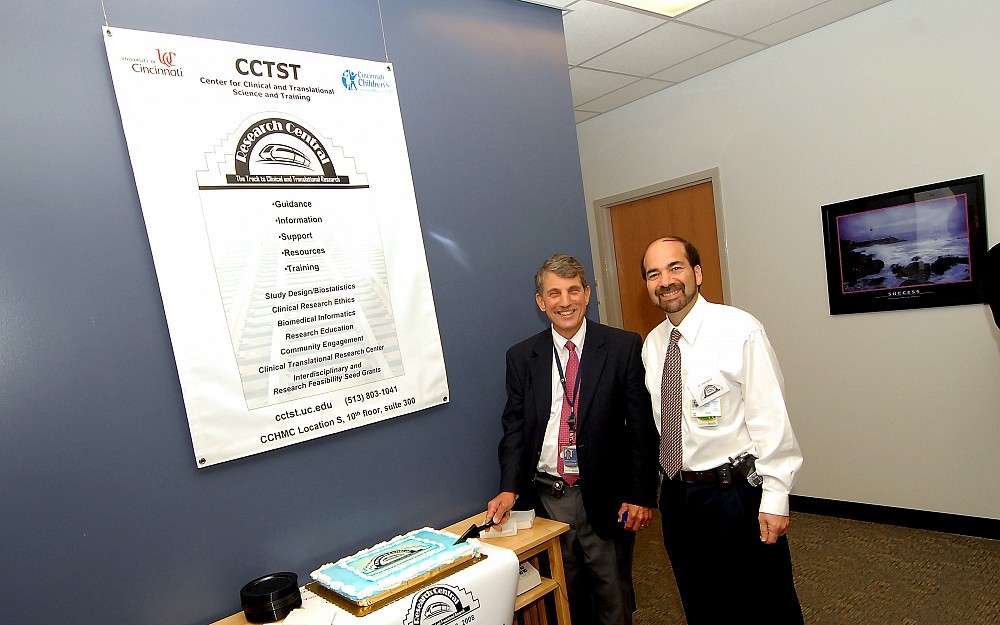
UC Responds to IOM Report on Clinical and Translational Research
Last month, the Institute of Medicine (IOM) released its report on the National Institutes Health-sponsored Clinical and Translational Science Awards (CTSA) Program.
UCs institutional CTSA was awarded in 2009 and is based in the Center for Clinical and Translational Science and Training (CCTST).
A partnership between the university, Cincinnati Childrens Hospital Medical Center, the Cincinnati Department of Veterans Affairs Medical Center and UC Health, the CCTST serves as a research resource and "academic home for clinical and translational scientists and programs. Working through the CTSA program, CCTST serves to bring innovations from the laboratory bench to the bedside and to applications within the community.
James Heubi, MD, professor of pediatrics, associate dean for clinical and translational research and co-director of CCTST, responds to questions raised regarding the impact of this report on the planned competitive renewal application for UCs institutional CTSA.
What is your reaction to the report?
The IOM report overall was quite positive, and the summary offered several points that will likely be addressed in the Request for Applications (RFA)anticipated in the next two to three monthsto which the CCTST will respond.
We are encouraged that the CTSA Program will continue to receive strong support by the NIH in the future. We believe the proposed IOM recommendations should be implemented and we are confident that our local efforts are currently well aligned with these recommendations.
The report recommended a number of changes, both to the NIH and to participating institutions. What are some of the areas that institutions can address, and how is the CCTST already addressing these?
We are particularly gratified by the concepts raised that each CTSA should capitalize on its institutional strengths and serve as an institutional focus for clinical and translational research.
Three areas recommended by the IOM that can be directly addressed by participating intuitions are:
Advance innovation in education and training programs.
Ensure community engagement in all phases of research.
Strengthen clinical and translational research relevant to child health.
The CCTSTs infrastructure is already set up to address these recommendations and has achieved much success. To date, we have:
Developed training programs (masters and certificate) in clinical and translational science.
Launched a Community Leaders Institute, with participants leveraging more than $3.3 million for their own organizations.
Engaged in a statewide network to connect Ohios Practice-Based Research Networks.
Worked with partnering institutions in Ohio to develop a statewide process for IRB approval on multi-center trials.
Worked directly with investigators in the greater Cincinnati area to reduce emergency department visits for children and adolescents with asthma.
These are but a few of the things that CCTST has been able to accomplish.
What is the CCTST planning for the coming year?
In 2013 we launched a new initiative aimed at helping young investigators to determine their research and mentoring needs and offer suggestions and advice for career planning. It also supports more established investigators who need additional help to support their research efforts. We call this the Integration Committee and we meet two to three times per month. We will continue with this initiative and build it into our response to the RFA.
We have also developed a mentorship training program based on a model from the University of Wisconsin. Weve already hosted two training sessions and will continue to roll this out to the university community.
We hope to work more closely in the coming year with the UC Research Institute to promote collaboration between UC faculty and industry in the area of medical device design.
We are also developing agreements between local hospitals to provide reciprocity for IRB approval between institutions.
Tags
Related Stories
New York Magazine: Does eating chocolate actually trigger...
May 2, 2024
The University of Cincinnati's Vincent Martin was featured in a New York Magazine/The Cut article discussing the lack of solid evidence that chocolate is a migraine trigger.
Yahoo News: Doctors see rising rates of colon cancer in younger...
May 1, 2024
Yahoo News featured comments from the University of Cincinnati's Rekha Chaudhary in a story about rising rates of diagnoses and deaths from colorectal cancers among young people.
Neuroimaging, AI help detect brain changes
May 1, 2024
Researchers at the University of Cincinnati and Dell Medical School at the University of Texas at Austin are leading a study using state-of-the-art neuroimaging techniques and artificial intelligence to identify changes in the brains among children of adults living with bipolar disorder.
